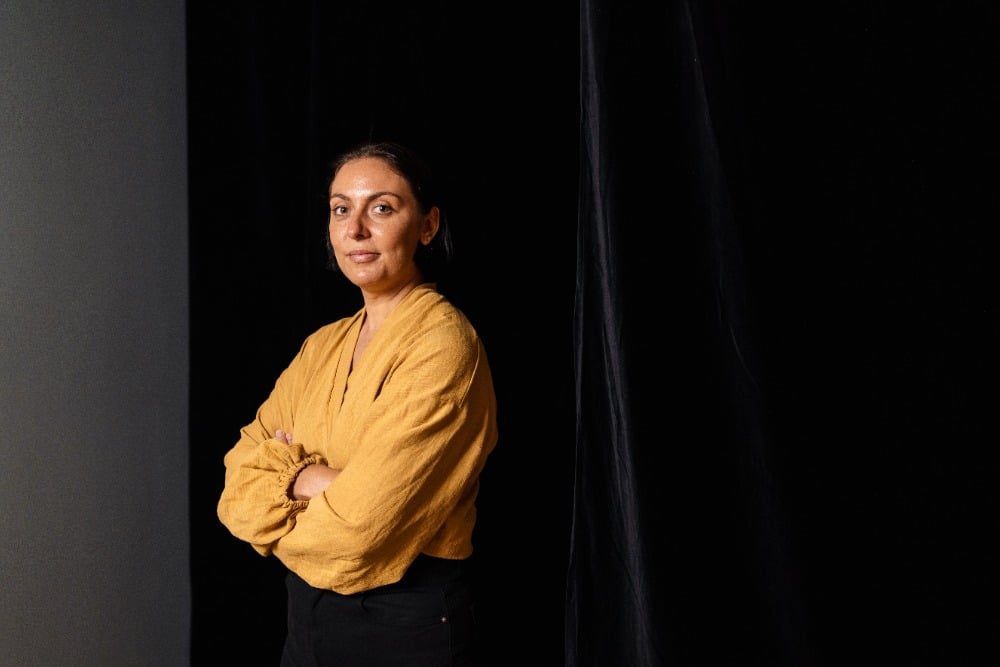
An exhibition nearly five years in the making, the National Gallery of Australia’s 4th National Indigenous Art Triennial: Ceremony, opened on 26 March.
Curated by Arrernte and Kalkadoon woman Hetti Perkins, in collaboration with National Gallery curators, Ceremony showcases 18 new bodies of work by 38 First Nations artists from across the country.
Perkins said that through the works presented, the participating artists assert the prevalence of ceremony as “a forum for artmaking today in First Nations communities”.
“Ceremony is the nexus of Country, culture and community, and the 4th National Indigenous Art Triennial is another stitch in a timeless heritage,” she said.
The expansive exhibition across the National Gallery site includes works in the Sculpture Garden, Fern Garden and on Lake Burley Griffin, and brings together a diverse range of artists working in a variety of art forms including sculpture, painting, ceramics, moving image, photography and more.
Canberra-based artist and Kaurna man, James Tylor, told Canberra Daily it’s “pretty special” to be part of the “pinnacle” Indigenous art show that is Ceremony.
His selected work, The Darkness of Enlightenment, features 18 daguerreotype photographs interspersed with a series of small-scale bronze works comprising Kaurna cultural objects, and flora and fauna native to the region.
The landscape photographs capture sites along South Australia’s Kangaroo Island and Fleurieu Peninsula, locations of significance to both Tylor’s Indigenous and European ancestors.
“There’s this period of time when Kaurna culture was documented by Europeans on the frontier when Adelaide was colonised,” he said.
“The objects that are in there all refer to things that happened at that point in time or bits where we know they’re recorded, and the information isn’t quite there … From a cultural perspective it’s like filling in the gaps.”
Kangaroo Island was colonised before the mainland by whalers and sealers, some of whom were Tylor’s European relatives.
“I have an interconnected relationship between those places and stories as well, both on my Indigenous and non-Indigenous side,” he said. “I’m kind of interested in that point of transmission of information between the two exchanges.”
Having been based in Canberra for the past four years, Tylor enjoys living here with his family and hopes to become better connected within the local arts scene as the ACT emerges from the pandemic.
“Canberra’s lovely right, it’s a beautiful place,” he said. “I was hoping to be more connected now four years on but it’s tough … it’s been a weird time.”
Nycinasty explores lived connection to spirits and ancestors

Melbourne artist and Gunditjimara and Djabwurrung woman, Hayley Millar Baker, told Canberra Daily she was honoured to have her work, an eight-minute black-and-white film titled Nyctinasty, shown as part of Ceremony.
“It’s iconic, this exhibition is really iconic, and it’s come at a really good time in my practice,” she said.
The artist’s first film, Nycinasty is about spirituality in contemporary times, and the domestic space. It draws on Millar Baker’s lived experience of connection to spirits and ancestors.
“All of my work is based on a foundation of my work experience and my own identity,” she said.
“For people who have had scary situations that they’ll bring in their experiences that way, whereas I see it and think it’s quite beautiful and poetic.
“I really wanted to get into abstracting horror in film, because I’ve never worked with film before but I love horror films.”
The film was shot during lockdown in Melbourne in one day – a “horrendous experience”, but a great learning curve for Millar Baker on her first production.
“It was a really long day with everybody … and with all of the city on lockdown we had to wait to get the footage to then be able to start with edits,” she said.
“There were only two occasions I was able to get in the editing suite so we could all work on it together.
“There were a lot of back and-forth and phone calls, which is interesting when you’re working on a big project with so many people.
“The fact that we did it and it turned out like it has is incredible.”
Both artists praised the exhibition for presenting a “beautifully curated”, diverse array of works.
“Every single work holds its own, but the works also communicate to each other so nicely; it’s a really beautiful curation by Hetti (Perkins),” Millar Baker said.
“It’s a special show; there’s not a lot of shows you see where every single work fits so well together.”
The exhibition will tour the country from August and, for the first time, the National Gallery will produce a digital publication to bring the stories of the artists and their art to a global audience.
The 4th National Indigenous Art Triennial: Ceremony is on at the National Gallery of Australia until Sunday 31 July; nga.gov.au
Get all the latest Canberra news, sport, entertainment, lifestyle, competitions and more delivered straight to your inbox with the Canberra Daily Daily Newsletter. Sign up here.


